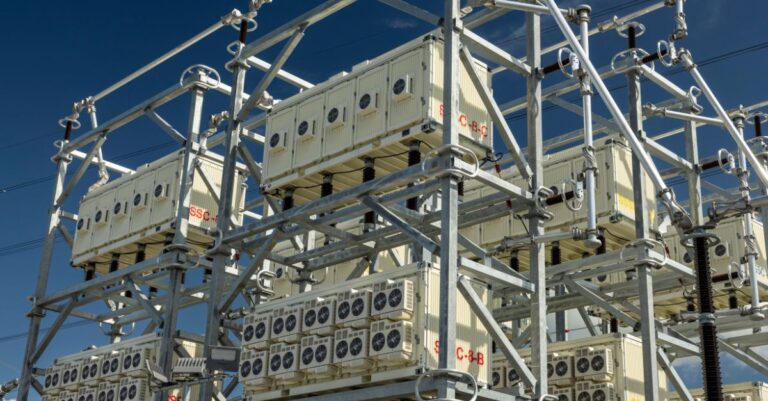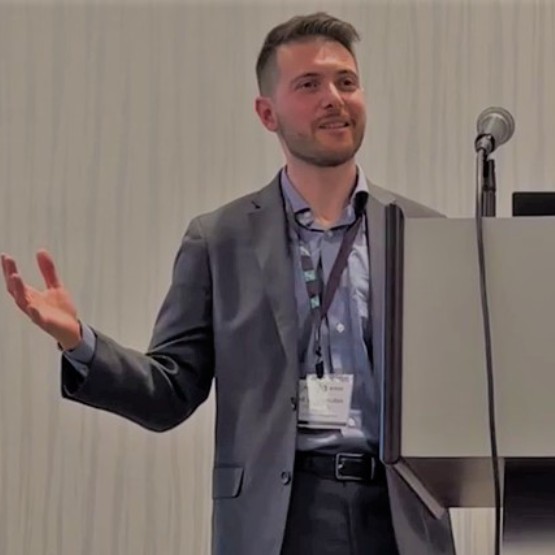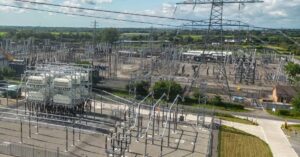

How does APFC actually enable interconnections?
June 6, 2024
FERC’s Order 2023 aims to streamline the interconnection process in the U.S., including through requiring inclusion of alternative transmission technologies (ATTs) in interconnection studies. But how do ATTs support faster interconnection of renewables? And is this already happening today? In this part 2 of his original article on Order 2023, Ted Bloch-Rubin explains how flexible ATTs help bring renewables online faster with real-world examples of projects in the US, the UK, and Australia.

In my last article, I discussed FERC’s new Order 2023 and how flexible ATTs can help shorten the interconnection queue process by enabling the utility to re-size the grid reinforcements based on the generation projects that commit to proceed through the queue. Since then, FERC’s Order 1920 has also been announced, reforming U.S. regional transmission planning for the first time in a decade, including requiring consideration of advanced power flow control (APFC) and other ATTs to meet transmission needs. I’ll cover Order 1920 in more detail another day, but in this article, I’m focusing on exploring how ATTs actually enable faster and more cost-effective interconnection of renewable energy to the transmission grid.
I’ll focus on APFC for this article, but it’s worth noting that other ATTs may help interconnect renewables in different ways. For example, advanced conductors can be used to replace aging infrastructure with state-of-the-art conductors that can carry more electricity along the same circuit.
Firstly, APFC refers to modular power electronics-based devices that can control power flows on transmission and distribution grids by physically changing the characteristics of the lines on which they are deployed. This allows utility operators to push power off overloaded lines and pull power onto underutilized ones, significantly increasing power delivery through the existing network. This novel approach is essential in meshed grids where, increasingly, a few congested lines act as regional bottlenecks, limiting the capacity of the surrounding network even where spare capacity exists. In addition to this core functionality of power flow control, APFC can provide dynamic services such as improving voltage stability and transient stability.
Distinct from legacy power flow control technologies, such as Fixed Series Capacitors (FSC), APFC is designed to be modular and voltage-agnostic. This means that more APFC devices can be easily and quickly added to existing deployments over time or relocated to an alternate site if the network need changes. This makes it a flexible grid solution that can also be rapidly deployed to support the connection of new generation when other equipment would still have been in the permitting or delivery phases.
While it’s taken time to fill the gaps, APFC solutions can now be readily identified and evaluated, with fully integrated native models in major planning software platforms such as PowerFactory (already live) and PSS®E (still in the works). This means that utilities can easily include APFC in their standard network planning and interconnection studies processes.
These attributes make APFC a flexible long-term platform for providing firm capacity to generators, which are commonly delayed or even negatively impacted due to congestion issues on the grid, which APFC can be dispatched or even re-sized to rapidly address.
To illustrate this, I’ll share some details from recent projects which use our APFC—SmartValve™—to support faster interconnection of renewable energy projects:
In New York State, Central Hudson is deploying 15 SmartValves at the Hurley substation to provide capacitive series compensation that pulls power onto the underutilized 345 kV Leeds-Hurley Avenue circuit. By balancing flows across the 345 kV circuits in this highly congested area, 185 MW of transfer capacity is unlocked to support the connection of the new renewable generation planned for the area. The Independent System Operator’s studies showed that the need for series compensation may increase from 21% to 30% in the coming years based on the generation connection requests for the area, which can be easily met by adding additional SmartValves to this deployment, rapidly and cost-effectively providing the necessary extra series compensation. The alternative option considered for this network need was a FSC that would have required 25% more substation space, additional site works, a $10 M higher cost, and would not be easily expandable if the need for series compensation increased as forecast. This project shows how SmartValves are being used to support increasing levels of interconnection in New York State.
Across the Atlantic, National Grid Electricity Transmission (NGET) is using SmartValve at three substations across five circuits at 275 kV and 400 kV to resolve congestion on critical boundaries caused by north to south power flows. This need was driven by both the significant growth of renewable generation in Scotland that needs to be delivered to demand centers in England, and the retirement of conventional generation plants. By pushing power off overloaded circuits and pulling power onto circuits with spare capacity, NGET is balancing power flows on these areas of their 275 kV and 400 kV network and utilizing over 2 GW of extra transmission capacity across Scotland and Northern England. This accelerates the integration of new wind power in Scotland by providing capacity faster than the other alternatives considered, and provides a more cost-efficient solution that can deliver over $500 million in savings in avoided curtailment costs over a seven-year period.
Down under, Transgrid is using 15 SmartValves across two 330 kV circuits to unlock 170 MW of extra transmission capacity primarily by pushing power off the overloaded Upper Tumut to Canberra line and pulling power onto the underutilized Upper Tumut to Yass line. Under certain scenarios when there is very high levels of generation at a nearby hydro power station and outages of alternate lines, both SmartValve deployments can instead be used to pull power onto theses above-named circuits to resolve constraints. This allows more renewable energy to flow between the provinces of Victoria and New South Wales, supporting the growth of renewable energy generation to replace the coal-fired generation that is retiring earlier than anticipated. Using SmartValves avoided reconductoring a line and constructing a new transformer in a national park, providing a faster, less environmentally impactful, and more cost-efficient solution. The project delivers cost savings of nearly $180 million, from a combined reduction in generation dispatch costs through more efficient market operation across the two states, and lower capital costs for interconnecting new generation in NSW.
Note: APFC, or SmartValve, is also part of the grid enhancing technologies (GET) set, which refers to hardware and/or software that dynamically increase the capacity, efficiency, reliability or safety of existing power lines, faster and at lower cost than traditional grid buildout.
If you missed part 1 of this article on Order 2023, you can read it here.
Contributing expert
Ted Bloch-Rubin is Director of Business Development for the Americas at Smart Wires, engaging with stakeholders across North America to increase awareness of grid enhancing technologies and how utilities can use them to get more from their existing grids. Ted was Chair of the WATT Coalition for 2021/2022 and remains active in the association’s policy and advocacy work. Prior to joining Smart Wires, Ted worked with in the high-tech transportation industry.
For press related purposes, please contact us at marketing@smartwires.com.
Dive deeper into related content
Explore our products and services
Talk to our experts


